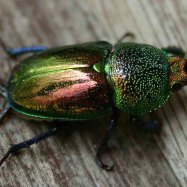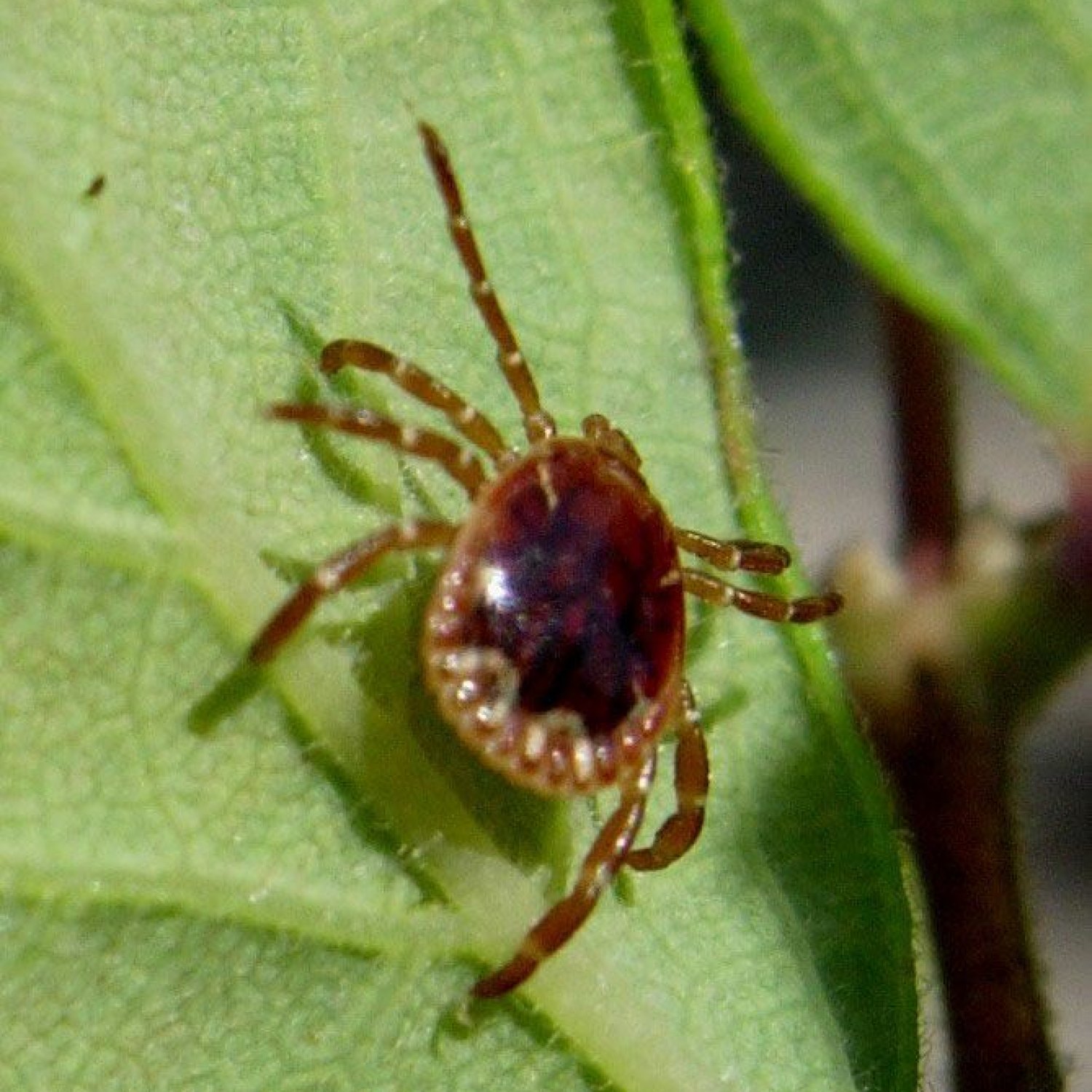
Lone Star Tick
Adult females: 3 to 4 mm, Adult males: 2.5 to 3 mm
The Lone Star Tick, found in the Eastern and Southern United States, gets its name from a small white spot on the backs of adult females. With a body shape that is oval and flat, these ticks can grow to be 3-4mm for females and 2.5-3mm for males. Remember to check for these tiny parasites after spending time outdoors! #LoneStarTick #Ixodidae #parasiteprevention #outdooractivities
Animal Details Summary:
Common Name: Lone Star Tick
Kingdom: Animalia
Habitat: Woodlands, grasslands, and shrublands
The Lone Star Tick: Discovering the Habits and Dangers of this Small yet Mighty Arachnid
In the world of insects and arachnids, there are some that instill fear and disgust in people, while others go largely unnoticed. The Lone Star tick, scientifically known as Amblyomma americanum, falls somewhere in between. Measuring a mere 3 to 4 millimeters for adult females and 2.5 to 3 millimeters for adult males, this tiny tick may not seem intimidating, but it can cause significant harm to both humans and animals Lone Star Tick.As its name suggests, the Lone Star tick is commonly found in the United States, specifically in the eastern and southern regions. However, it also has a presence in other parts of North and South America, making it a prevalent menace.
Anatomy and Appearance
Before delving into the potential dangers of this tick, let's first understand its physical characteristics. The Lone Star tick belongs to the Animalia kingdom, Arthropoda phylum, and Arachnida class. As for its order and family, it belongs to Ixodida and Ixodidae, respectively.In terms of appearance, the Lone Star tick is brown in color, with a distinct white spot on the back of adult females. It also has an oval and flat body shape, which allows it to latch on to animals and humans easily. The tick's size may increase after it feeds on its host's blood, swelling up to ½ inch in diameter.
Habitat and Behavior
The Lone Star tick thrives in woodlands, grasslands, and shrublands – making it a common sight in outdoor areas Lakeland Terrier. Its behavior is influenced by environmental factors, including temperature, humidity, and the presence of animals or humans. It is most active during the warmer months, from late spring to early fall, but can also be found year-round in warmer climates.Similar to other ticks, the Lone Star tick is a hematophagous insect, meaning it feeds on blood. However, unlike some other ticks, it is known to be an aggressive feeder, making it a potential threat to humans and animals.
The Lone Star Tick's Diet
As mentioned earlier, the Lone Star tick is a hematophagous insect, which means it feeds exclusively on blood. The tick's primary host is typically medium to large mammals, such as deer, dogs, cats, and humans. However, it is also known to feed on birds and reptiles.While the tick can survive on blood from various hosts, it is most commonly found on white-tailed deer, earning it the nickname "deer tick." This preference can increase the risk of Lyme disease transmission, a common tick-borne illness in the United States, as deer are known to carry the bacteria responsible for the disease.
Geographical Distribution
As mentioned earlier, the Lone Star tick is mainly found in the eastern and southern United States, with a concentration in states like Texas, Oklahoma, and Arkansas. It is also found in states like New Jersey, Pennsylvania, and Missouri, among others. However, its presence has been reported in other regions, including parts of Central and South America.Dangers and Diseases
While the Lone Star tick may seem like any other tick at first glance, it poses several dangers to both humans and animals. The tick's aggressive feeding behavior and its ability to survive on various hosts increase the risk of disease transmission, making it a significant public health concern.One of the most notable diseases associated with the Lone Star tick is Southern Tick-Associated Rash Illness (STARI). This lesser-known illness is caused by a bacteria not yet officially identified, making it difficult to diagnose and treat. It can cause symptoms similar to Lyme disease, such as fatigue, fever, and a bull's eye rash around the tick bite. However, it is not yet confirmed whether STARI can lead to long-term health complications like Lyme disease.
Another potential danger associated with Lone Star tick bites is an allergic reaction to alpha-gal, a sugar molecule found in red meat, which can result in a severe allergic reaction after consuming meat products. This condition, known as alpha-gal syndrome or red meat allergy, is caused by exposure to the tick's saliva, which contains alpha-gal molecules. As a result, those affected by this allergy must avoid consuming meat from mammals, including beef, pork, and lamb.
Additionally, the Lone Star tick is known to transmit diseases to animals, such as ehrlichiosis, anaplasmosis, and tularemia. These illnesses can cause severe health complications and even death in pets and livestock.
Prevention and Removal
The best way to prevent Lone Star tick bites and the potential dangers associated with them is to stay vigilant and avoid areas where ticks are prevalent. If you do venture into tick-prone areas, it is essential to take precautions, such as wearing long sleeves and pants, using insect repellent, and doing a thorough tick check after spending time outdoors.In case of a tick bite, prompt removal is crucial in reducing the risk of disease transmission. To safely remove a tick, use fine-tipped tweezers to grasp the tick's head as close to the skin as possible and pull straight upwards with steady pressure. Be sure to avoid crushing or twisting the tick, as this can increase the risk of disease transmission. After removal, clean the area with soap and water and monitor for any signs of infection or illness.
Final Thoughts
The Lone Star tick may be small in size, but its potential dangers should not be taken lightly. Understanding its habits and behaviors can help individuals and communities take the necessary precautions to avoid bites and potential diseases. It is also essential to educate others about the potential dangers of this arachnid to ensure the safety and well-being of both humans and animals. Remember, prevention is always better than cure when it comes to dealing with ticks. Stay informed and stay safe.

Lone Star Tick
Animal Details Lone Star Tick - Scientific Name: Amblyomma americanum
- Category: Animals L
- Scientific Name: Amblyomma americanum
- Common Name: Lone Star Tick
- Kingdom: Animalia
- Phylum: Arthropoda
- Class: Arachnida
- Order: Ixodida
- Family: Ixodidae
- Habitat: Woodlands, grasslands, and shrublands
- Feeding Method: Hematophagous
- Geographical Distribution: North and South America
- Country of Origin: United States
- Location: Eastern and Southern United States
- Animal Coloration: Brown
- Body Shape: Oval and flat
- Length: Adult females: 3 to 4 mm, Adult males: 2.5 to 3 mm
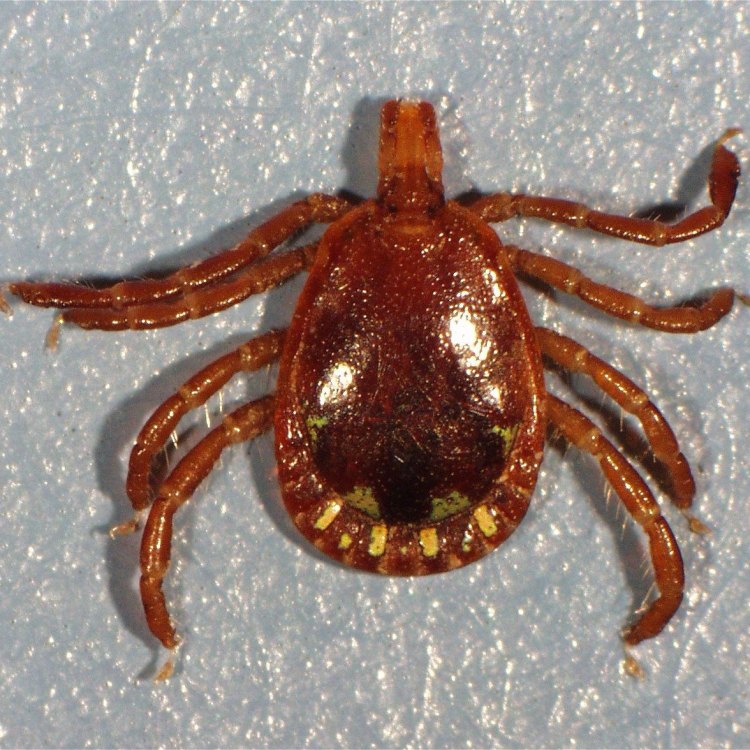
Lone Star Tick
- Adult Size: Adult females: 6 to 9 mm, Adult males: 2 to 4 mm
- Average Lifespan: 2 to 3 years
- Reproduction: Sexual
- Reproductive Behavior: Males seek out females
- Sound or Call: No known sound or call
- Migration Pattern: Non-migratory
- Social Groups: Solitary
- Behavior: Aggressive biting behavior
- Threats: Bite transmission of diseases
- Conservation Status: Not evaluated by IUCN
- Impact on Ecosystem: Can be vectors for various diseases
- Human Use: None
- Distinctive Features: Distinctive white dot on the females' back
- Interesting Facts: The females are more aggressive biters than the males
- Predator: Various small mammals and birds
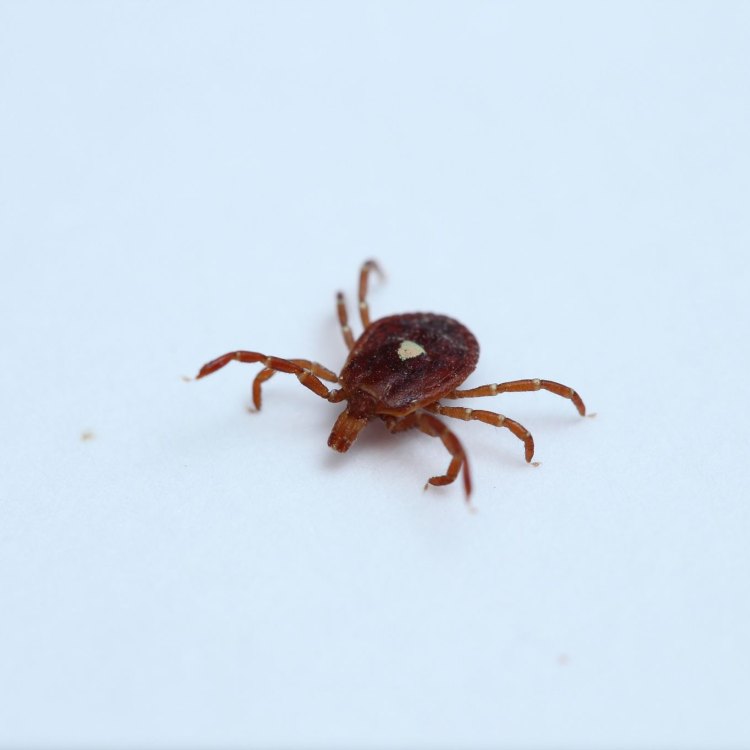
Amblyomma americanum
The Lone Star Tick: A Tiny Creature with a Big Bite
In the world of ticks, the Lone Star tick is one small but fierce creature that often goes unnoticed. Yet, despite its small size and solitary social groups, this tick species has a big impact on humans and the ecosystem. From its aggressive biting behavior to its distinctive features and interesting reproductive behavior, there is much to learn about this often overlooked tick.Native to the southeastern United States, the Lone Star tick, scientifically known as Amblyomma americanum, is mainly found in wooded areas and grassy habitats PeaceOfAnimals.Com. This tick species is named after the distinctive white dot on the back of the adult females, which resembles the shape of the state of Texas (hence the name "Lone Star"). But don't let its small size and unique marking fool you – this tick is a formidable predator.
A Tiny Tick with a Big Appetite
As an adult, the females of this species can grow up to 6 to 9 millimeters in size, while the males are typically only 2 to 4 millimeters. Despite their small size, these ticks have an average lifespan of 2 to 3 years, making them one of the longest-lived tick species.Like many other tick species, the Lone Star tick reproduces sexually. This means that both male and female ticks must mate in order to produce offspring. Interestingly, it is the males that seek out the females – a behavior that is uncommon among other tick species.
The Aggressive Biting Behavior of the Lone Star Tick
The Lone Star tick is known for its aggressive biting behavior, particularly among the adult females. These ticks will attach themselves to a host and feed on their blood, sometimes for several days Longnose Gar. This behavior is not only a nuisance for humans, but it can also pose a threat as these ticks are potential vectors for various diseases.One of the most concerning diseases transmitted by the Lone Star tick is the bacterial infection known as Ehrlichiosis. This disease can cause symptoms such as fever, headache, and fatigue, and if left untreated, can lead to more severe complications. In recent years, the Lone Star tick has also been linked to the transmission of a meat allergy called alpha-gal syndrome, where individuals develop an allergy to red meat after being bitten by this tick.
The Lone Star Tick and Its Impact on the Ecosystem
While the Lone Star tick's aggressive biting behavior can be a threat to humans, its impact on the ecosystem is also worth noting. These ticks are known to feed on a wide range of host species, from white-tailed deer to domestic animals to wild birds. This large host range makes them efficient vectors for the transmission of diseases among different species, potentially causing further disruptions in the ecosystem.In addition, the Lone Star tick is a non-migratory species, meaning they do not travel long distances. This can lead to large concentrations of these ticks in certain areas, which can have a significant impact on the local ecosystem. The effects of having a large number of these ticks in one area can be devastating, especially for smaller mammals and birds who may fall prey to their aggressive biting behavior.
The Lone Star Tick and Human Use
Unlike other tick species, the Lone Star tick does not have any known benefits for human use. They are not used in medical research or for any medicinal purposes. However, their potential role in disease transmission has sparked much interest in studying their behavior and potential impact on human health.Interesting Facts About the Lone Star Tick
Apart from its distinctive white dot and aggressive biting behavior, there are many fascinating facts about the Lone Star tick that are worth mentioning. One interesting fact is that the females are more aggressive biters than the males. This is due to the fact that they require more blood to lay their eggs, and therefore need to feed more frequently.Furthermore, the Lone Star tick is known to be an excellent climber. They are able to climb up to 3 feet high in search of a host, making it easier for them to find a meal. These ticks are also very hardy, able to survive in a variety of environments and climates, making them a resilient and adaptable species.
Predators of the Lone Star Tick
Like any other species, the Lone Star tick also has its own set of predators. Various small mammals and birds, such as opossums, raccoons, and wild turkeys, are known to feed on ticks, including the Lone Star tick. These animals play an important role in controlling the tick population and reducing the risk of disease transmission among humans.In Conclusion
In summary, the Lone Star tick may be small in size, but it certainly should not be underestimated. With its aggressive biting behavior, potential for disease transmission, and impact on the ecosystem, this tick species is a force to be reckoned with. It is important to take precautions when venturing into tick-prone areas and to be aware of the potential risks associated with tick bites. By understanding and educating ourselves about the Lone Star tick, we can better protect ourselves and the environment.
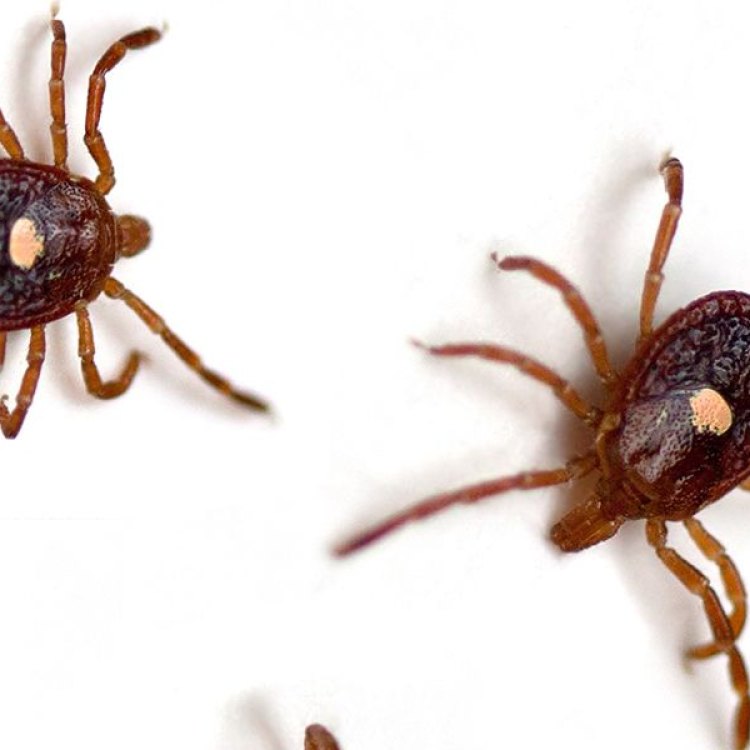
The Lone Star Tick: Discovering the Habits and Dangers of this Small yet Mighty Arachnid
Disclaimer: The content provided is for informational purposes only. We cannot guarantee the accuracy of the information on this page 100%. All information provided here may change without prior notice.

